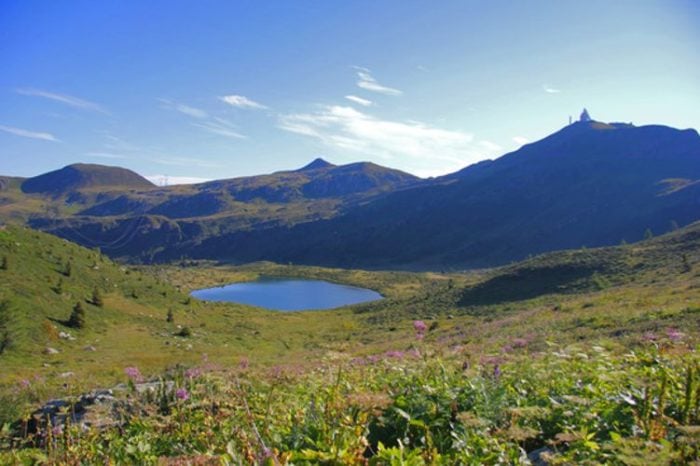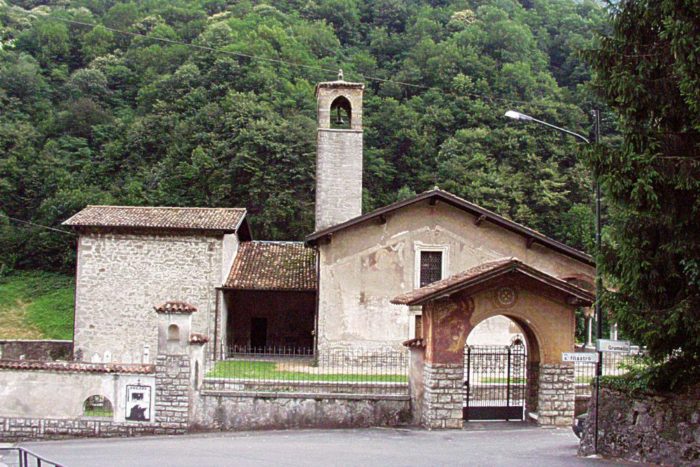
The history of this pre-alpine valley lying behind Brescia has always been linked with iron which has made it famous throughout the world. Its link with iron mining and works has now become a tourist resource through a museum itinerary named La via del ferro e delle miniere, an interesting occasion for encountering and becoming acquainted with the human efforts that transform the mineral in objects, utensils and artistic works. Ideally, the path starts from the S. Aloisio Tassara mine at Collio, industrial archaeology site, transformed into an adventure mine to be safely explored by youngsters and adults alike, in total safety using ropes, foot-walks, Tibetan bridges, ladders and platforms.
A deeper dip into the Earth’s bowels is, instead, the proposal at the Marzoli Mine in Pezzaze. Here, a miners’ train takes passengers – protected by helmets and waterproof clothing – to discover the iron deposits and mining surfaces. At the exit, a visit must be made to the museum which also contains some wonderful iron sculptures by a local artist, Vittorio Piotti.
Continuing along this fascinating iron trail we get to the furnace at Tavernole sul Mella, defined “fundamental stage of the path of iron through Europe”. This very particular architectural complex, carefully restructured, we can understand how this metal becomes cast iron. Rooms and evocative spaces surround the huge melting tower. A link is missing in the chain: Sarezzo where, under the strokes of huge hydraulic hammers and anvils, a mineral becomes a tool.
Presentations and lessons regarding the Places and work culture, didactic laboratories, and guided visits can complete this truly well structured and organised itinerary.
For almost six centuries the main town of the valley, Gardone Valtrompia, has been a synonym for the production of weapons which has led to artistic works of great prestige. Schools and engraving workshops make the arms true and proper works of art, thanks to the skills and dedication handed on from generation to generation.
Industrial activities have therefore characterised the towns along the Mella river, but Valtrompia also has rich green areas, uncontaminated corners and its own artistic patrimony.

Churches, sanctuaries, Places of worship can be found everywhere. One of its artistic gems is the church of San Filastrio at Tavernole sul Mella, also including the 16th-century chapel of San Rocco, richly frescoed with works dating from the Gothic era to the Renaissance period. Dedicated to San Rocco is also the 15th-century sanctuary at Collio, a magnificent example of a “room” church of Lombard tradition with its original Romanic- style portal. The outlying district of Tizio conserves a Madonna and Child, a Byzantine icon perhaps coming from the Middle East. Splendid is the Mitria parish church at Nave: this important structure, built between the 8th and 9th centuries, of Romanic-Gothic style, rises in the midst of meadows and vineyards and contains wonderful frescos from the Renaissance period.
In Gardone Valtrompia we find the architectural complex of the church of Santa Maria degli Angeli. Dating from the 15th century, this church contains beautiful frescos attributed to Vincenzo Foppa and Paolo da Cailina the younger. The parish church at Marmentino is dedicated to Saints Cosma and Damiano and conserves two canvases by Moretto.
Concesio is where Pope Paul VI was born. Among the Places linked with the Pope, a visit is worthwhile to the Madonna della Stella Sanctuary on the hill named San Vigilio at Concesio, which boasts an altar piece painted by Romanino.
Also worth visiting are: the Madonna della Misericordia sanctuary at Croce di Savenone di Pezzaze, the parish church Santa Maria Maddalena at Lavone di Pezzaze, the church of San Lorenzo di Magno in Bovegno, the Madonna del Castello sanctuary at Inzino and the church of San Martino in Prada, at Polaveno, on the road leading to Lake Iseo. The ethnographic museum in Lodrino houses an interesting collection of manufacts and images of the farming and mountain world and culture.
A rich calendar of events and shows highlight every season of the year.
Summer resorts can be found in Bovegno and Collio as well as other welcoming rural boroughs such as Marcheno, Lodrino Cimmo, and Irma where hotels, holiday farms and alpine refuges offer family hospitality.
Valtrompia is a 50-km long valley that tells the geological history of the southern Brescian Alps, to be discovered between the peaks named Giogo and Maniva. The “Corna Blacca”, however, is of dolomitic origin. Some excellent tracks give the possibility of reaching forests and alpine huts, starting from Gardone Valtrompia, Marmentino, Bovegno, Collio Nave, or Villa Carcina. Hikers will find ideal the path “Silvano Cinelli” which winds through an environment characteristic of lower and medium mountain slopes. The so-named Guglielmo is the local and much loved mountain.
![]()
Typical food and wines of Valtrompia, served in trattorias and holiday farms, include cheeses, cured meats, game, honey, mushrooms and forest fruits as well as trout caught in mountain streams. The “Barga soup” based on ceps mushrooms is much appreciated. From summer pastures and the valley, we get the cheese known as “Nostrano”, made from cows’ milk, with a hard consistency and intense flavour.
Some holiday farms, specially dedicated to families, offer itineraries to discover the woods, the spontaneous fl owers and herbs through sensorial paths. Others are more inclined towards sports and offer mountain bikes and horses for enjoyable excursions.
Lumezzane is known throughout the world for its production of pans and tap fittings but another important occasion is the encounter with astronomy offered by the “Serafino Zani” observatory which frequently organises lessons and dedicated evenings.